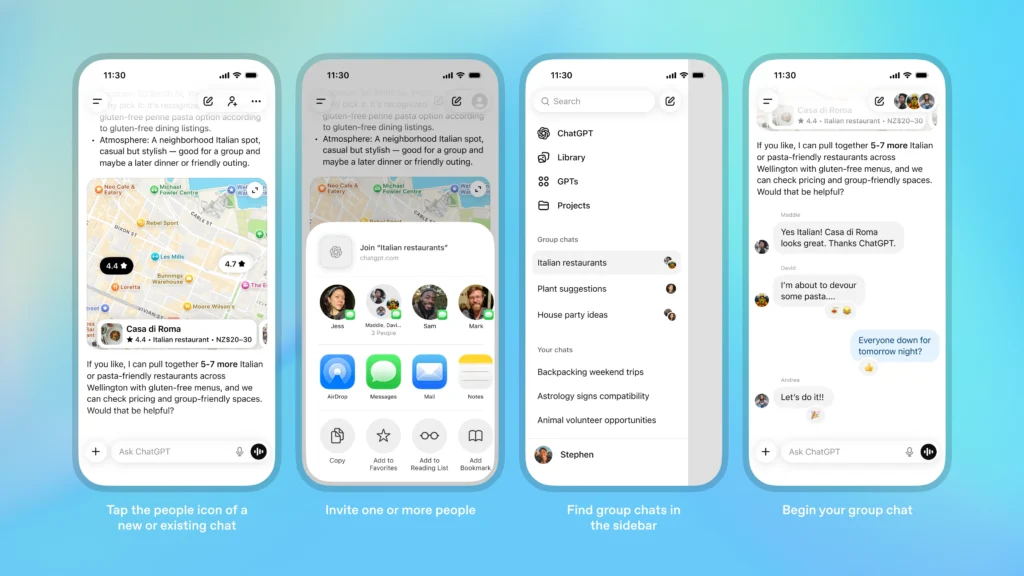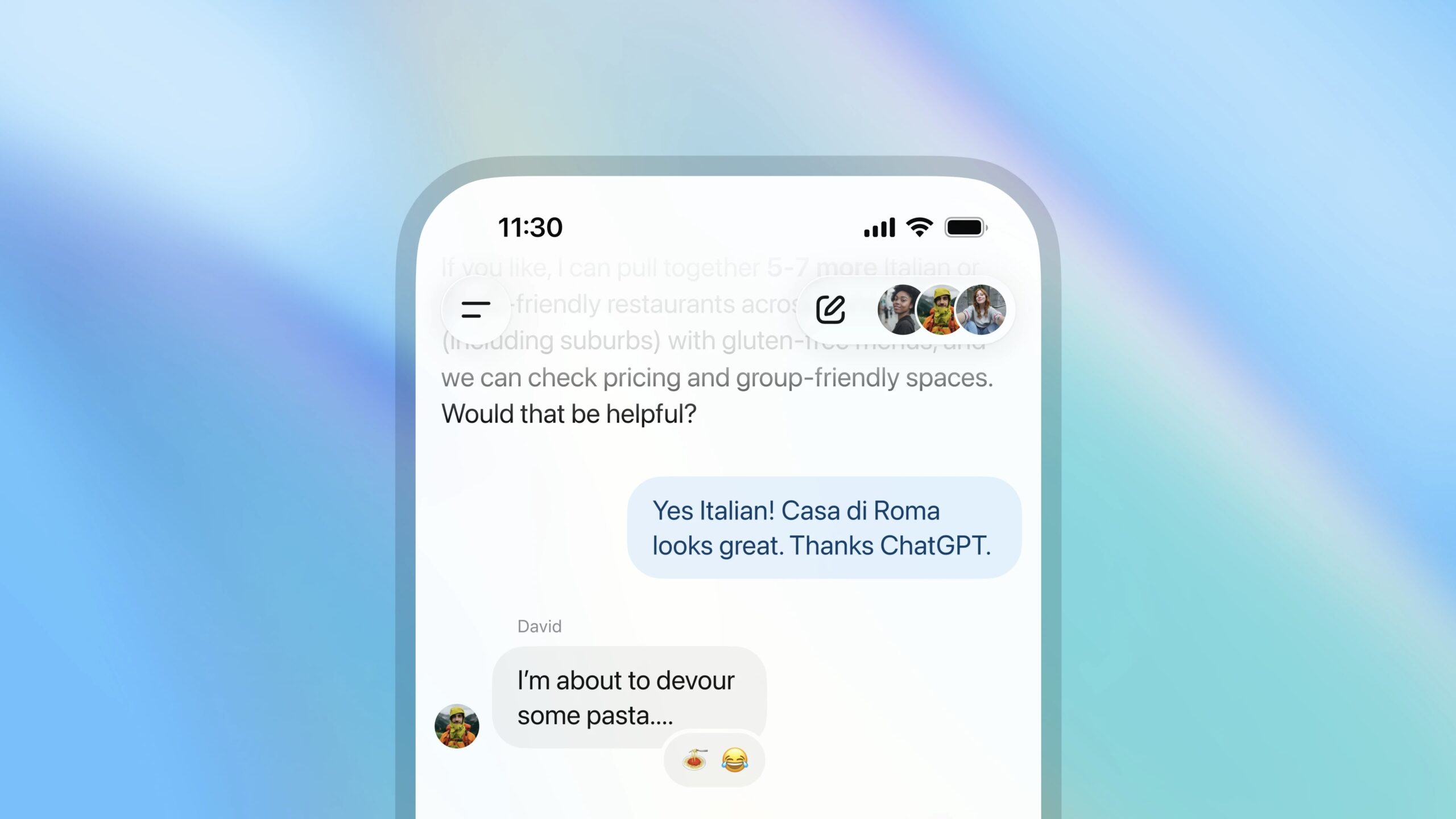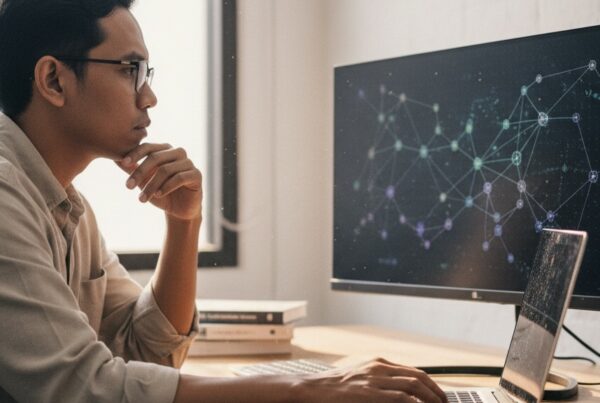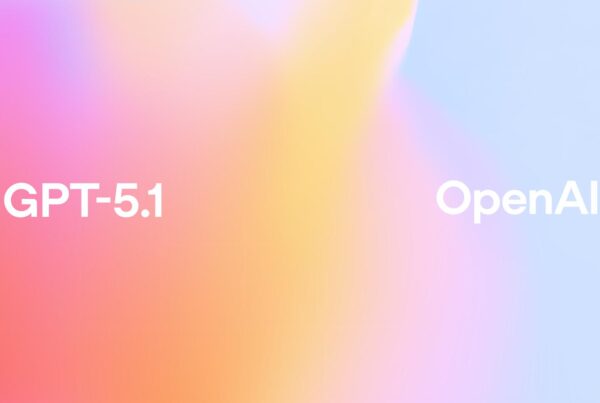ChatGPT group begins testing as OpenAI's latest collaborative feature. In this initial phase, the service is designed to facilitate many users to discuss together with AI in a coordinated conversation space. This step is considered a major change that could shift ChatGPT's function from a personal conversation tool to a more dynamic collaborative workspace.
This announcement of this feature trial attracted the attention of global technology observers because it demonstrated OpenAI's ambition to bring multi-party direct interaction into AI systems. With that approach, ChatGPT is no longer just answering individual questions, but acting as a facilitator of communication within large groups.
Global Trial Wave
OpenAI launched a trial of this feature in four major regions: Japan, New Zealand, South Korea, and Taiwan. This step is carried out gradually while monitoring user behavior, model performance, and technical stability. The first two paragraphs of this H2 provide the initial context regarding the reasons for choosing that area as the starting point for the launch.
Although still in the trial stage, this feature can already be used by customers at the Free, Go, Plus, and Pro levels. This demonstrates the company's commitment to conducting large-scale experiments before releasing the global version. This decision is expected to generate more diverse input on how people collaborate in the context of AI.
Invitation Mechanism in ChatGPT Group
In this trial phase, users can invite up to twenty people into a single conversation. Support for large groups opens up wide opportunities for activities such as trip planning, team discussions, and creative brainstorming. In practice, each participant can send messages like in a normal conversation, while ChatGPT responds according to the dynamics of the chat.
Private conversations remain secure, because when a user adds a new member, ChatGPT immediately creates a copy of the discussion as a new group space. This prevents personal content from being carried into multiparty conversations. The analyst views this mechanism as a more mature form of privacy protection.
In addition, invitations can be shared via links, making it easier for new members to join without a complicated process. Users are also asked to create a brief profile to display basic identity within the group. This setting is considered important to maintain transparency among members.
Adaptive AI Behavior in Collaborative Spaces
OpenAI states that ChatGPT is equipped with additional social capabilities to understand the dynamics of multi-turn conversations. This model is now able to recognize when to respond and when it is better to wait for the discussion flow to develop. This ability is especially important in group conversations that often have many messages at the same time.
As part of the new interaction, users can explicitly call ChatGPT by mentioning its name. ChatGPT can also provide emoji reactions to messages. Some contexts require a more relaxed response, so the emoji feature is considered helpful in adjusting the mood.
The model used in this trial is GPT-5.1 Auto. This technology allows the system to select the best model according to the request context and the user's subscription level. The search feature, file upload, voice input, and image creation remain available, making group conversations more flexible.
Flexible Group Settings
All group members have the right to customize the chat room. They can change the group name, add or remove members, and set notifications according to their preferences. The only exception is the group creator, who cannot be removed by other members.
In addition, there are special settings to add personal instructions to ChatGPT so that its style and flow of assistance are more aligned with the group's objectives. This feature allows the work team to customize the AI response style for specific project needs.
Privacy and User Control
OpenAI emphasizes that security and privacy remain the main foundation of every new feature. The opening two paragraphs of this section explain the company's commitment to maintaining the boundary between private conversations and group conversations. This is done by separating the conversation storage space and applying restrictions on the model's memory usage.
In its implementation, group conversations will not be engaging or use the user's personal memory. ChatGPT also will not create new memories based on interactions within the group. This concept ensures that sensitive conversations among members remain confidential and do not affect recommendations outside the group.
Additional Security Rules for Teenagers
For users under 18 years old, the system automatically reduces content sensitivity for all group members. This rule is applied to ensure a safe and appropriate experience for teenagers. Parents or guardians can disable this feature through parental control settings.
This policy has attracted the attention of digital regulation observers, as it marks the company's serious efforts to provide a safe experience across age groups. Group chat rooms risk presenting mixed content, so extra control is considered the right decision.
OpenAI also promises to introduce more advanced privacy controls in the future, especially for memory settings. Transparency regarding who the group members are is maintained so that users can understand the conversation context clearly.
Member Joining Mechanism and Transparency
Each user must accept the invitation before joining the group. There are no exceptions to this rule. All members can see the list of participants so that there are no conversations with unknown parties. This transparent approach is considered important for the sustainability of safe interactions.
Group chat rooms are placed in a dedicated folder on the sidebar so users can manage multiple conversations neatly. This new layout clarifies which are group conversations and which are personal conversations.
In many collaborative cases, such visual structures help minimize errors when sharing information. OpenAI seems to design the entire flow based on common collaboration habits in other applications but adapted for AI interaction.
The Future of Collaboration with AI

According to OpenAI, the ChatGPT group feature is just the first step towards a much more advanced AI collaborative space. The first two paragraphs of this section provide an overview that the company aims to make ChatGPT not just a question-and-answer tool, but a center of creativity and collective decision-making.
The latest generation GPT model is designed to handle complex conversation dynamics. This opens opportunities for companies, creative communities, and families to plan together without switching applications. ChatGPT has the potential to become an integrated digital meeting space.
Cross-Disciplinary Creative Collaboration
This new feature is projected to support various cross-sector activities. Designers can discuss visual concepts, research teams can process data collectively, while families can plan activities without distance limitations. This demonstrates how the function of ChatGPT is increasingly approaching universal utility.
This situation marks the transformation of AI roles that are increasingly blending into daily activities. Not only as a question-answering machine, but also as a discussion partner. This change appears to align with the global development of AI, which is increasingly moving towards collaborative work.
If this feature proves to be stable and efficient, OpenAI is likely to expand the scope of testing to more countries. Countries with high digital adoption rates have the potential to become the next targets.
Future Additional Feature Integration
In their announcement, OpenAI stated that they want to study user behavior before setting a more ambitious roadmap. The next model may add capabilities such as automatic project management, group analytics, and more advanced creative features based on images and videos.
Users also want automatic capabilities to summarize group conversations, visualize conversations into a workspace, or analyze group members' opinions. This possibility becomes an interesting exploration space for OpenAI.
In the long term, ChatGPT is predicted to become a coordination hub for various collaborative projects, both professional and personal. The transformation can change the way society designs collective decisions.
The ChatGPT group feature shows a new direction for increasingly advanced digital collaboration. With AI's ability to understand multi-conversation dynamics, user experience can become much more efficient and structured. In the future, readers can follow various similar technological developments through other latest articles on Insimen.















